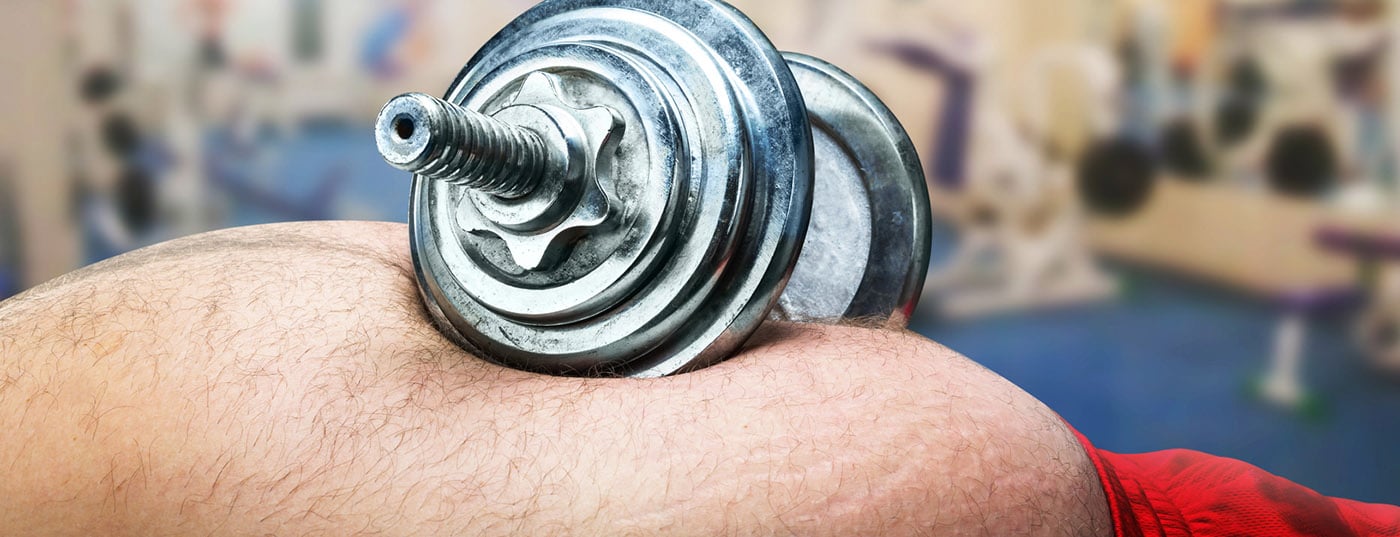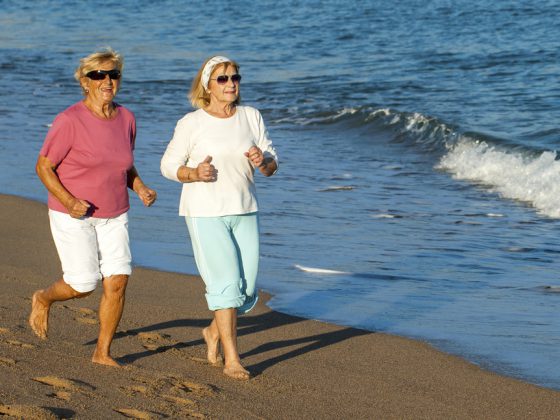Obesity is unhealthy, increases cardiovascular risk and therefore mortality. It is worth taking a closer look at this seemingly clear connection. Where in the body are fat deposits particularly harmful to health? And which parameter is used to calculate the mortality risk: the BMI or better the Waist-Hip-Ratio? In contrast, how meaningful is physical fitness as a factor? Questions answered at the Review Course in Clinical Cardiology.
Speaking on the topic of “Fatness or Fitness,” Prof. Thomas G. Allison, MD, of the Mayo Clinic in Rochester. Studies show that increased BMI in the general population increases the risk of mortality (especially cardiovascular) – this applies to both sexes and all ages [1]. But does an elevated BMI really equate to obesity? Much more significant seems to be where in the body the fat is located. Subcutaneous fat is a less relevant cardiovascular risk factor than visceral resp. “central” fat (classic “beer belly” in an otherwise slim person).
A more adequate parameter than BMI is the waist-hip ratio. If this value increases, the hazard ratio for all-cause mortality also increases accordingly (from about 0.8 in women and from about 1 in men) – while controlling for important influencing factors such as age, diabetes, hypertension/cholesterolemia, and BMI.
A study with 15,184 participants from the Mayo Clinic [2] generated a great deal of interest. Men with “normal weight obesity” had by far the worst long-term prognosis: having a completely normal BMI of 22 kg/m2 but a waist-to-hip ratio of 1 increased their mortality risk by 87% compared with men with normal BMI and normal waist-to-hip ratio (0.89). Compared to men with elevated BMI (27.5 kg/m2 resp. 33 kg/m2) but normal waist-to-hip ratio, the risk was twice as high (HR 2.24 and 2.42, respectively). It was comparable to that of individuals with elevated levels in both parameters (in fact, it was still slightly higher). For women with normal BMI but central obesity, the corresponding risk increases were 48% (vs both normal) and 32% (vs only BMI increased).
Caveats regarding obesity, then, are:
- BMI is not always a good measurement tool for obesity (70-85% of body mass is fat-free body mass in normal weight individuals).
- BMI is more predictive in men (“apple shape”) than in women (“pear shape”).
- Central obesity (abdominal circumference or abdomen-to-hip ratio) predicts prognosis better than BMI.
- Metabolic syndrome helps define high-risk obesity.
Fitness – little brings a lot
“We all know that improved cardiovascular fitness can reduce mortality quite significantly,” he said. The following applies: The extent of fitness resp. physical activity is not linearly related to prognosis. Even small changes in fitness lead to a large benefit, while a further increase in physical activity has less and less effect, so the curve of risk reduction flattens out. At extremely high fitness or training levels, a slight increase in risk may even be observed.
How do fatness and fitness interact?
Also with regard to fitness, the decisive factor is which measured value one uses. Cardiorespiratory fitness is based on measured VO2max, which is expressed as ml/kg/min. Obese people automatically perform worse, although they do not necessarily have worse cardiovascular conditions, because their adipose tissue increases the denominator (kg) but has little effect on the numerator (ml).
Prof. Allison brought the example of two pickup trucks: both have the same basic equipment and the same number of horsepower. However, the carrying surface of one is fully loaded with bricks, and the carrying surface of the other is empty. Which of the two trucks will get to the top of the hill first? “Higher total weight does not necessarily correspond to poorer physical fitness – analogous to horsepower,” Prof. Allison explained. “Thus, it is a challenge in both fitness and fatness to translate the phenomena into concrete measurements.”
Of course, it takes more effort to get more weight moving, which is why fatter people are usually less active. Basically, however, more weight does not automatically mean less fitness. When you increase your physical activity, you usually decrease your adipose tissue (especially the central one) and thus improve your fitness (values) – in addition, the activity becomes easier. The prevalence of metabolic syndrome is inversely related to fitness. The higher the fitness, the less likely metabolic syndrome and vice versa [3].
Thick, but fit
While the criticism of VO2max suggests that obesity is a prerequisite for poor fitness (values), so to speak, and thus a mediator of the relationship between fitness and mortality, other research points in the opposite direction. According to this, it is rather the fitness that is the decisive factor. The overweight is less relevant as long as one is sufficiently fit.
A large cohort study in 1999 [4] showed that unfit individuals, whether thin (<16.7% body fat), normal (16.7 to <25%), or obese (>25%), had increased cardiovascular and total mortality risk, whereas fit individuals were at significantly lower risk in all groups. The same applied to the classification according to abdominal circumference and fat mass. Fit individuals in the highest obesity quartile had a lower risk than thin, unfit individuals. And even when the latter had low abdominal girth, they had a greater overall mortality risk than fit individuals with high abdominal girth. Conclusion: Only fit individuals benefit from their slimness – although the threshold for “fitness” was set rather low in this study. It was collected via a treadmill test in the sense of a surrogate for VO2max. The 20% who scored lowest were considered unfit.
Another study from the Mayo Clinic setting showed that a drop in functional aerobic capacity (indicator of fitness) below a cutoff of 80% resulted in a large increase in mortality, and this occurred in all weight groups (classified by BMI and body fat) without significant differences between hazard ratios [5]. Consequently, fitness predicted all-cause mortality independently of weight classification.
Long-term results that included BMI, waist circumference, and fat percentage as factors point in the same direction: fitness is an independent predictor of all-cause mortality [6]. The same was true for waist circumference, but only as long as fitness was not included as a covariate.
Conclusion
“Overall, fitness appears to be a more significant parameter for health and mortality risk than obesity – particularly when BMI is used to assess obesity. Measurement of central fat predicts prognosis better, but fitness remains more relevant as a risk factor,” Prof. Allison concluded.
Source: 14th Zurich Review Course in Clinical Cardiology, April 14-16, 2016, Zurich.
Literature:
- Calle EE, et al: Body-mass index and mortality in a prospective cohort of U.S. adults. N Engl J Med 1999 Oct 7; 341(15): 1097-1105.
- Sahakyan KR, et al: Normal-Weight Central Obesity: Implications for Total and Cardiovascular Mortality. Ann Intern Med 2015 Dec 1; 163(11): 827-835.
- Kullo IJ, et al: Relation of low cardiorespiratory fitness to the metabolic syndrome in middle-aged men. Am J Cardiol 2002 Oct 1; 90(7): 795-797.
- Lee CD, Blair SN, Jackson AS: Cardiorespiratory fitness, body composition, and all-cause and cardiovascular disease mortality in men. Am J Clin Nutr 1999 Mar; 69(3): 373-380.
- Abudiab M, et al: Use of functional aerobic capacity based on stress testing to predict outcomes in normal, overweight, and obese patients. Mayo Clin Proc 2013 Dec; 88(12): 1427-1434.
- Sui X, et al: Cardiorespiratory fitness and adiposity as mortality predictors in older adults. JAMA 2007 Dec 5; 298(21): 2507-2516.
HAUSARZT PRAXIS 2016; 11(5): 34-35











